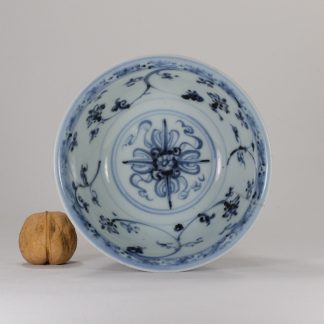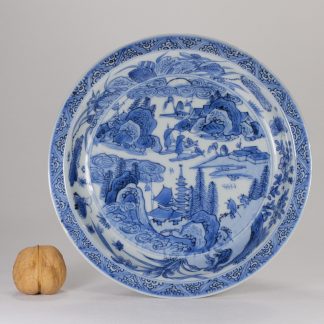Description
Description: Chinese porcelain dish decorated with a twisted pine, a lone pine growth in a windy area. Clouds and Sun in the sky. This is a typical decoration of ko-sometsuke dishes, which were made for the Japanese market (see Notes below). Very nice, vivid blue. Sand grit at the foot and chatter marks on the base.
Dating: 17th century, Ming dynasty.
Size: 14.8 cm diameter
Provenance: Antiquarian market
References:
Notes: Here a good description of Ko-sometsuke ware taken by the commercial site of Marchant:
“At the end of the Wanli period in 1619, when emperor Wanli died, the finances of the Ming dynasty were in decline, and the porcelain market needed to stay afloat. Fortunately the opportunity to produce for Japan arose, as when Wanli passed, the suppressed trade route was re-opened. A new group of Chinese porcelain emerged specifically for the Japanese market, ko-sometsuke, old blue and white, dated 1620-1645. Believed to be influenced by Oribe wares, they were largely used for Japanese tea ceremonies and homewares. The pieces have their own unique characteristics compared to other Chinese porcelain of the time; sand or grit on the footrims, thicker bodies and a blue tinge to the glaze. The glaze would often flake off the biscuit body on rounded rims, which the Japanese called mushikui, earth worm nibbles. Despite their rustic appearance, the pieces were laborious to produce. They were time consuming and also often needed moulding or shaping by hand. As the tea ceremony became more and more popular and ritualized, Jingdezhen potters had to keep up with demand for supply. The features became appreciated by collectors and experts of the tea-ceremony and ko-sometsuke are treasured pieces.”
We would like to add that the subject of these dishes is often represented by a single tree or a tree and an animal, painted in dynamic manner: the animals in action or looking backwards, the trees twisted by wind, like in this case, which is particularly dramatic.






Reviews
There are no reviews yet.